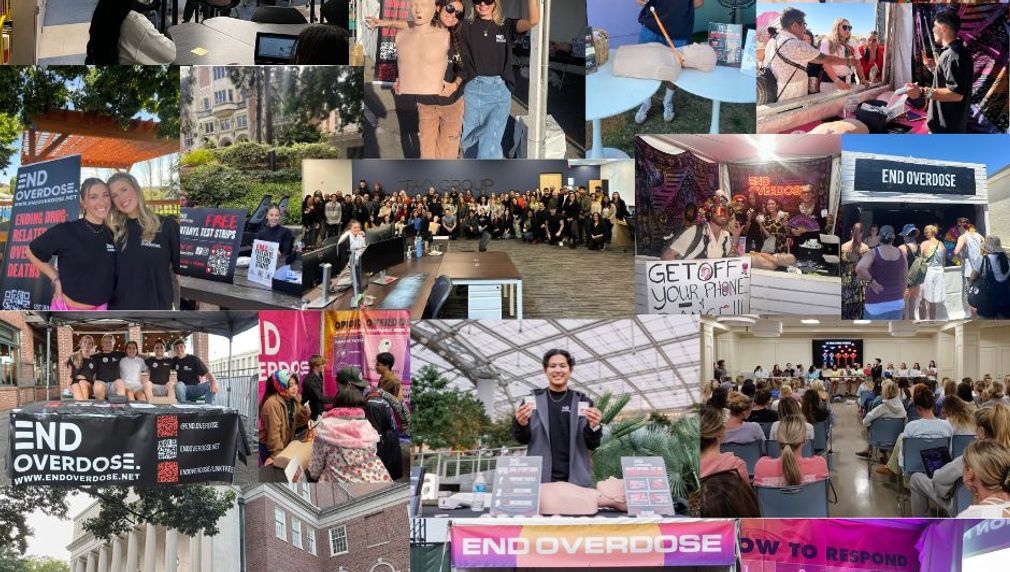End Overdose - Overdose Prevention & Response Program
End Overdose’s initiative expands equitable access to naloxone, fentanyl test strips, and culturally responsive overdose prevention education across Los Angeles County. Through free resource shipping, multilingual online training, and in-person outreach at schools, recovery centers, and community events, the program removes cost and language barriers that prevent timely overdose response. The initiative aims to reduce preventable deaths and build a more prepared, empowered, and resilient county.

What is the primary issue area that your application will impact?
Community safety
In which areas of Los Angeles will you be directly working?
City of Los Angeles (select only if your project has a citywide benefit) County of Los Angeles (select only if your project has a countywide benefit) Antelope Valley Long Beach South Bay Gateway Cities San Fernando Valley West LA San Gabriel Valley South LA East LA Central LA
In what stage of innovation is this project, program, or initiative?
Expand existing project, program, or initiative (expanding and continuing ongoing, successful work)
What is your understanding of the issue that you are seeking to address?
Los Angeles County is facing a devastating overdose crisis, with 3,092 deaths in 2023, most involving fentanyl. Disparities persist, overdose deaths rose by 238% among Asian residents and 51% among Latinx residents in 2019. Many residents, particularly in underserved areas, lack consistent access to naloxone, fentanyl test strips, and culturally relevant overdose prevention education. End Overdose is actively addressing these gaps. Through our existing programs in LA County, we’ve trained tens of thousands of residents and equipped them with lifesaving tools like naloxone and fentanyl test strips. Our services are free, accessible, and community-trusted. We’ve partnered with public health departments, treatment and recovery centers, schools, and grassroots organizations across the region. With expanded support, we’re positioned to scale this proven, community-rooted model and save even more lives across Los Angeles.
Describe the project, program, or initiative this grant will support to address the issue.
This grant will support End Overdose’s initiative to expand access to overdose prevention tools and education across Los Angeles County. We will scale up our free naloxone and fentanyl test strip distribution program to reach more residents, particularly those in underserved or geographically isolated neighborhoods. Supplies are mailed directly through a user-friendly online training and distribution system, eliminating cost, transportation, and stigma as barriers to access. In 2024, we distributed 36,175 doses of naloxone and 18,825 fentanyl test strips across the county. With this grant, we aim to increase our impact by distributing at least 40,000 naloxone doses and 20,000 test strips in 2025.
To complement this expansion, we will translate our online overdose prevention and response training into Spanish, Chinese, Tagalog, and Korean– four of the most commonly spoken languages in LA County. This will ensure residents with limited English proficiency receive culturally responsive, accessible education on how to recognize and respond to an overdose.
Funding will also support growth in our in-person outreach, including training and distribution at schools, treatment and recovery centers, colleges, community events, and with local organizations. In 2024, we trained 24,062 people in LA County; in 2025, we aim to train 30,000. Through accessible, multilingual, and community-rooted programming, we seek to reduce preventable overdose deaths and empower residents to save lives.
Describe how Los Angeles County will be different if your work is successful.
If our work is successful, Los Angeles County will see a measurable reduction in preventable overdose fatalities and stronger, more prepared communities. Angelenos– regardless of language, income, or location– will have free access to naloxone, fentanyl test strips, and overdose prevention training in Spanish, Chinese, Tagalog, and Korean. By increasing access and reducing stigma, more people will be equipped to intervene in emergencies and share lifesaving knowledge with others. Our intended impact includes a 10–15% reduction in overdose deaths and a significant increase in the number of people trained and equipped to respond to an opioid overdose across the county. In the long term, we will expand our model to include additional overdose response education and translate our materials into more languages. Our vision is a future where no one dies from a preventable overdose—where every community has the tools, knowledge, and support to respond with compassion, equity, and care.
Approximately how many people will be impacted by this project, program, or initiative?
Direct Impact: 40,000
Indirect Impact: 700,000